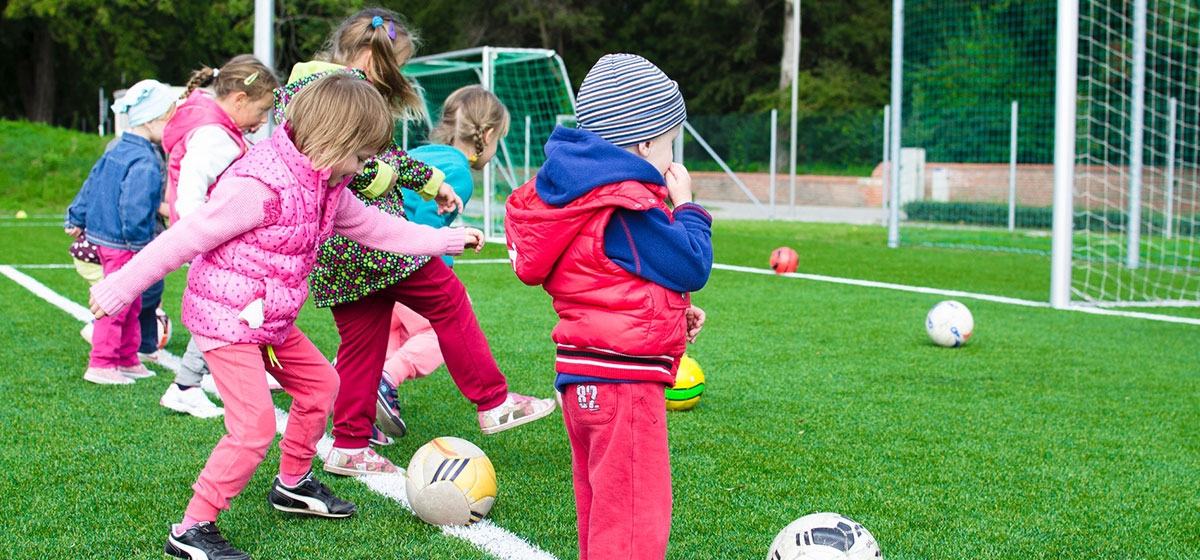
Question: “I’m trying to get my kids to be more physically active. What are the benefits of participating in recreational youth sports, like soccer and baseball? Or is it better to simply encourage kids to play on their own?”
I’ve spent a career in competitive athletics, first as a player and later as a college coach, so I have mixed emotions on this issue. I do believe that in the proper setting, organized youth sports can provide a positive experience for kids, both physically and emotionally. Participating on a youth soccer, baseball or basketball team can be an effective means for providing children with regular physical activity as well as opportunity for peer socialization. That isn’t to say that there can’t be a downside. I’ve also witnessed first-hand the ugly side of youth sports: ultra-competitive coaches who place winning a trophy above the development of the players under their charge, leagues that eliminate kids at an early age (10 and under) by trimming rosters and cutting players, and parents pushing their children to play for a specific club or team when the kids have little interest in doing so.
I am also a big advocate of “free” play. I was fortunate to grow up in a small town surrounded by soccer fields, baseball diamonds and large tracts of wooded forests and fields. There were a lot of kids my age in the neighborhood. On a typical summer day, my brother and I would be out the door after breakfast for a full day of pick-up basketball or soccer games, playing in the woods, and riding bikes—most if not all without adult supervision. We organized our own games and were physically active all day long. None of us formally “worked-out” but we were all physically fit. We had the best of all worlds, but sadly that world no longer exists for many people.
My children Eliza and Travis are both of college age. When they were youngsters, my wife Gail and I would have loved to let them run and play outdoors on their own, unsupervised, as I did in my youth. But that just wasn’t possible. There were no fields or woodlands near our home, no ball fields or playgrounds within walking distance, and cars constantly sped past our home along the street that fronts our yard. The issue of safety was an ever-present concern. Many families are faced with the same dilemma today. To provide Eliza and Travis with opportunities for regular physical activity we had to consider alternative options—one of which was participation in youth sports. Those experiences have helped to formulate my opinion of the potential positives and negatives of youth sport participation.
The Centers for Disease Control and Prevention (CDC) recommends that children and adolescents should do 60 minutes or more of moderate-to-vigorous physical activity every day. Most of the activity should be aerobic-type exercise, but a portion of those 60-plus minutes should also include muscle-strengthening exercise on at least 3 days of the week. Participation in a youth sport can potentially provide some of that recommended activity. An appropriate youth sport experience, and I emphasize the word “appropriate,” encompasses many of the elements you would expect to see in a program of regular physical activity. These elements include:
1. Enjoyment. Any form of regular exercise and physical activity must be enjoyable. If not, there is a high probability that it will not remain regular for very long.
2. Structure. Participating in a youth sport adds structure to physical activity, another key element for consistency. Kids are informed when to practice and what to do when they are there.
3. Opportunity to socialize. Kids and adults alike generally have more fun when exercising with a group of friends or teammates.
4. Physically activity for an extended period. Kids won’t benefit from standing around—they are built to move—so you want to choose an activity that achieves that objective. Sports such as soccer, basketball, hockey, and roller skating can provide excellent aerobic workouts and burn lots of calories in the process.
A youth sport experience that encompasses these essential elements is, in my opinion, a great way to add additional physical activity to your children’s lives. Keep in mind that kids are more likely to repeat an activity if they enjoy it. They will also be more likely to do it spontaneously, without adult coaxing or organization. So, whether the activity be unstructured free play or organized youth sport, improved health and fitness should be viewed as an added benefit rather than the primary goal of the activity. The most important consideration is that the activity be enjoyable, fun and keeps them moving.

